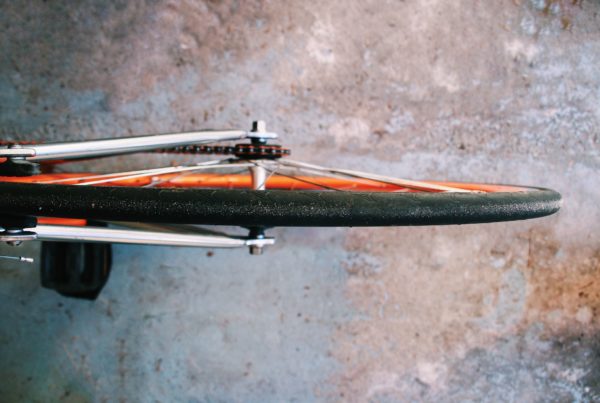This article was first published in the July 2012 issue of Plaintiff magazine (plaintiffmagazine.com).
Walk in your client’s shoes — the Gerry Spence method taken over the top
The client’s pain
On Thursday, May 3, I met with Ms. B___ and her daughter. Ms. B___’s arm, specifically her radius, was shattered when she took a bad fall. Surgery, a plate, ten screws. I took notes as she told me how she could not work at the hospital for now and how difficult it was to care for herself.
A beautiful day for a bike ride
On Friday, May 4, I had a court appearance in Redwood City. The weather was spectacular and, aside from the appearance, my day was free. I decided to test the limits of my single-speed bike and ride to court. A cyclist I knew was a San Francisco to Google person. That’s a group that rides to the Google campus in Mountain View regularly. He pointed me to a nice bay front route.
In the City, I never take my eye off the road. But here I was in lovely, carefree suburbia taking in the view. So what could possibly go wrong?
Impact
You already know where this story is headed. By looking at the scenery, I never saw the hard green pine cone in the bike lane. My front tire hit it and spun perpendicular. Impact was instantaneous. At 22 mph, I slid a nice distance. I put my right hand down to push myself up out of the road. As I did, my wrist sent a roaring message up my arm. Epic pain. I looked down at the strange looking deformity that was definitely not supposed to be there.
A kind motorist who stopped said, “That looked bad. Can I do anything to help?”
I held up my arm. “Yes. My wrist is badly broken. Would you mind calling 911?” Her eyes widened as she looked at my wrist and dialed.
The injury
A badly shattered radius. A hospital stay, surgery, a plate, and yes, you guessed it, ten screws, just like Ms. B___.
Empathy
This was my first (and hopefully last) significant injury. Suddenly Ms. B___’s descriptions of her problems went from academic to actual. For instance, putting food in high-sided bowls so you don’t push it off the plate made sense. Typing? Not happening. The military three S’s (shave, shower and something else)? Those took a bit longer than they used to. In fact, almost every single thing in life was impeded.
The Spence method
The Spence method, psychodrama, Trial Lawyers College, whatever your source, tells you to put yourself in the shoes of your client, the defendant and your opposing counsel. Become one with them to understand their motivations and you will be able to embrace and become the story in trial. They put it much more eloquently, but that is my synthesis.
My inattention while cycling thrust me into Ms. B___’s shoes in a sudden and major way. I don’t recommend going to this extreme, but you better believe I’ll be able to articulate the difficulties she has experienced.
So how do you adopt this for your own clients without going out and injuring yourself? The first step is to set aside your own potentially jaded nature. Years in the business can cause one sometimes to go through the motions. You take notes without putting yourself in the speaker’s place. When you see death, limb loss, paralysis and pain on a daily basis, it is human nature to try to compartmentalize. That compartmentalization can lead to a hardening that should be identified and removed, to the best of our ability.
The second step is to put yourself in their place as best you can. I had the misfortune of the ultimate lesson. There are easier ways. Your client can’t use his hand? Tape on an oven mitt for a few hours and try to get stuff done at the house. Borrow a set of crutches and try to take public transit to work and on some errands. Find a way to take on the injury and live with it a few hours or more. Try a psychodrama session and look at your client’s injury and its impact from all angles. And if you don’t know what psychodrama is, look it up or ask a Spence disciple as there is not enough room on this back page.
Closing argument
The swelling on my wrist has gone down. The range of motion slowly returns. And I typed this without too much difficulty. But the experience and its immediacy in relation to Ms. B___’s injury remain.
We are our clients. We are their pain. A central part of our mission is conveying the difficulty of their experiences to the jaded – defense counsel, adjusters and jurors who have not had to live with the problems themselves. Without living through that difficulty, in actuality or through psychodrama, we are hard-pressed to tell their tales.
Endnote
1. By way of background, the court appearance was for a case where the clients were the family of a wonderful woman, a bicyclist, who was killed when she was run down by a big rig.
2. The paramedic who attended, packaged and transported me was the same paramedic who responded to the bicycle incident in the court case for which I was supposed to appear – he vividly remembered the incident. The world is at times very small.




